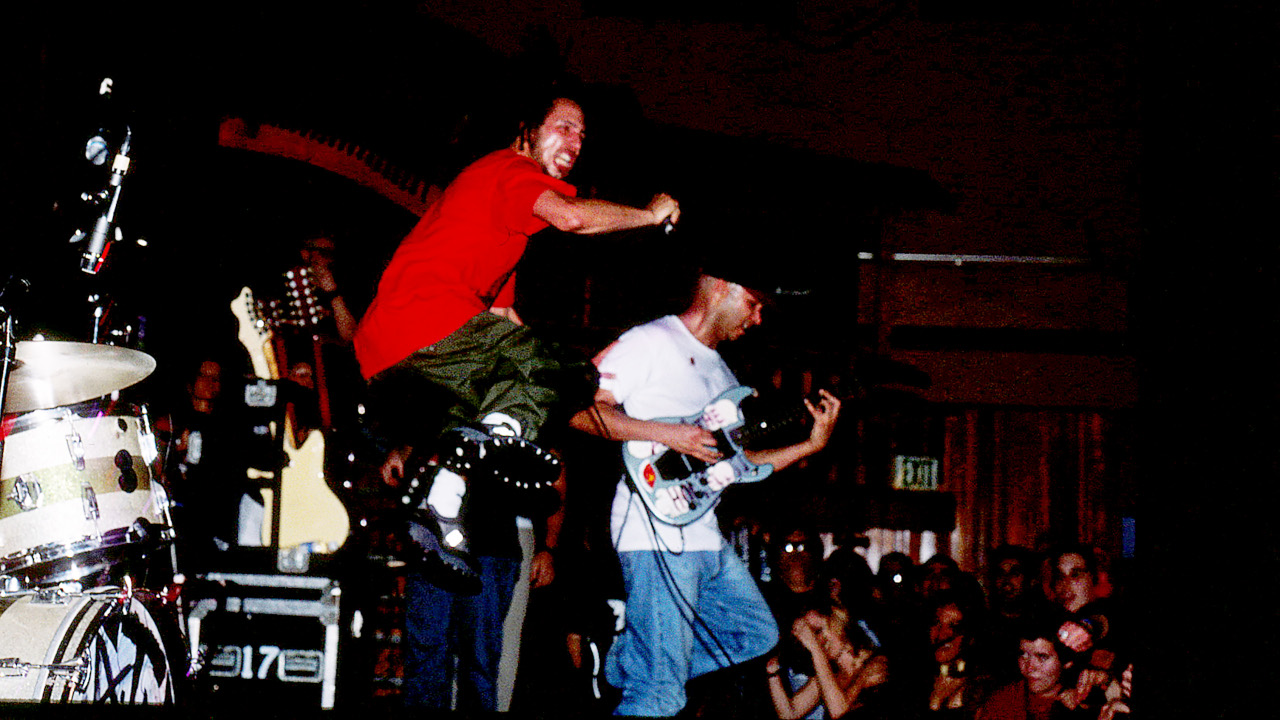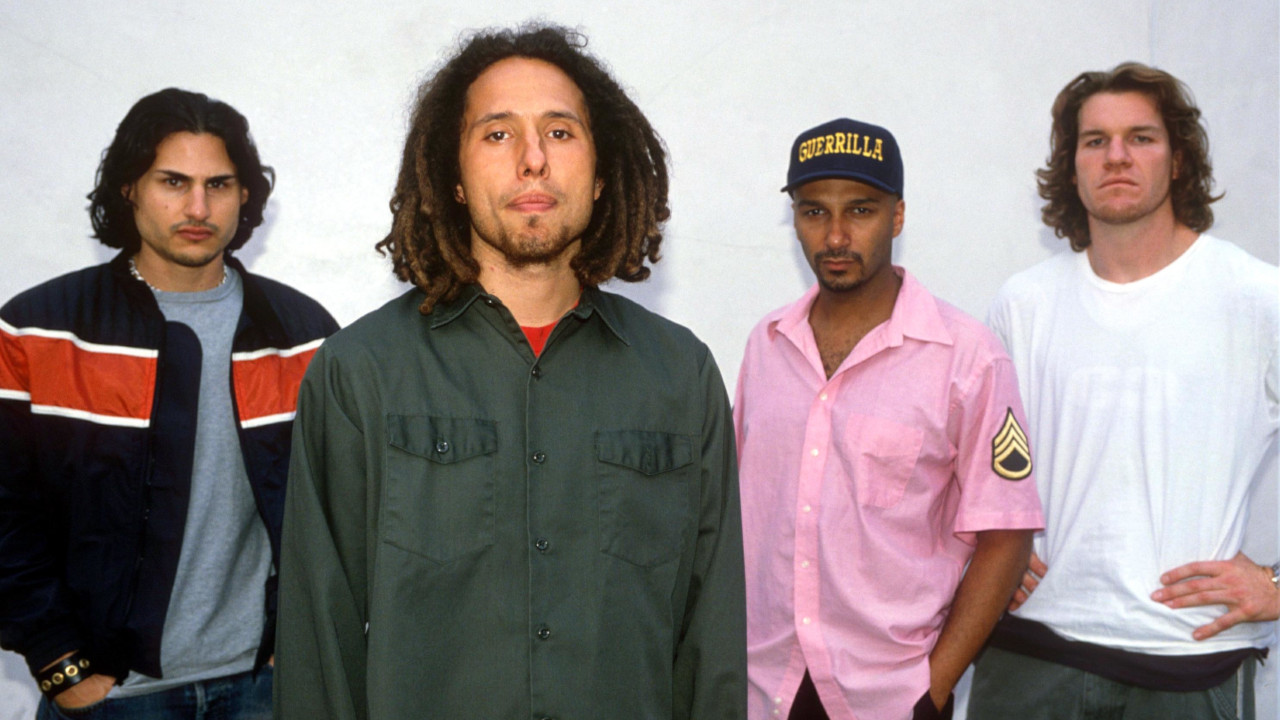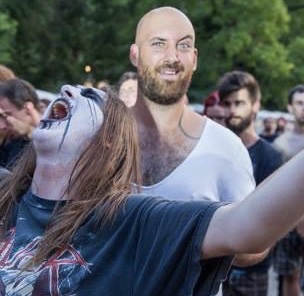By 1999, Rage Against The Machine were well established as one of the most important and influential bands of the decade. Their revolutionary amalgam of huge, heavy guitar riffs, inescapably propulsive grooves and furiously righteous, rapped vocals were utterly unique and inadvertently created a blueprint for what would become the nu metal movement.
But, although nu metal was currently the dominant style in alternative music, it had long since ceased to represent the ideals that drove Rage’s music. While Limp Bizkit were doing it for the nookie, Rage’s entire reason for existing was to raise awareness and attempt to bring about societal change, so the band were unsurprisingly unimpressed by the state of the music that now surrounded them.
“We just happen to be the band who have been able to create this open space within pop music,” vocalist Zack de la Rocha said in 1999, “and try to set in motion a new era where more dissident voices in commercial music can become part of the dialogue. It comes with great responsibilities, though – for every Nirvana there were 10 or 15 Bushes or whoever, and with Rage there’s been some not so good bands.”
So, after a lengthy absence following 1996’s Evil Empire, when Rage returned with their much-anticipated third album there was much to prove. Sitting among the track listing of said album was a song that would give the band yet another era-defining anthem, and cause such a furore that everyone from rock fans to mainstream news channels had to take note of it. The song was Sleep Now In The Fire, and it provided the soundtrack for arguably the band’s greatest act of rabble-rousing.
There was some quite heavy discussion in the aftermath of Rage’s 1996 album Evil Empire that the interpersonal tensions within the band could potentially lead to their split. “I didn’t feel that my contribution was being acknowledged among the four of us,” Zack confessed to Kerrang!, before cautiously noting: “I don’t see why we can’t continue, primarily because we have overcome a lot of the tensions. I don’t think that, in our heart of hearts, we were really ready to destroy this gift that we’d fought for.”

In 1998, Rage returned to the studio to create what would become their third album, The Battle Of Los Angeles. Famously, the band would jam ideas out in the studio, and a riff that guitarist Tom Morello had been playing around with for some time would end up being the catalyst for the new album’s most notorious track.
“The main guitar riff had been bouncing around in my head for a while,” Tom told Guitar World in 2000 about the genesis of Sleep Now In The Fire. “We finally put all the pieces together working on the album. The song had the working title ‘MC5’, because it has that raw feel of The Stooges or The MC5 mixed with Rage’s thunderous rhythm section. The song really took shape when we married the main guitar riff to a very 70s, rolling bassline. I couldn’t help but envision a huge festival audience jumping up and down to this one.”
With the music for Sleep Now In The Fire coming together nicely, Zack added his lyrical flair, seething against capitalist greed, namechecking the conquest of the native American people, slavery, US forces bombing Hiroshima in the Second World War and the use of Agent Orange during the Vietnam war.
Like much of his work, it was a scathing takedown of society’s very worst traits, but it was written in a far more stress-free manner than previous records. “This time the guys took the musical reins and I came in to do the lyrics,” Zack said. “In the end it was a healthier, more fulfilling process than past times.”
The finished track was one of the finest songs in Rage’s catalogue – skyscraper huge and capturing the anger, the punk energy, the skilful musicianship and the ingenuity of the four men. This focused, more unified Rage now had an anthem for their new album. They also had a happy accident that gave the song a nice little cherry on top when Tom discovered one of his guitar pedals could pick up some very interesting interference.
“While using an old, vintage distortion pedal called a Tone Bender, I found out that when I turned on the pedal but didn’t play anything, I picked up a crystal clear signal from a Korean radio station,” he told Guitar World. “In earlier mixes of Sleep Now In The Fire, that radio thing was featured more prominently. We had the signal running through the entire song, it was a little annoying, so we decided just to stick it at the very end. I always like to say there are no samples on any of our records, and this is a good example. That radio signal was no sample – it was played!”
The Battle Of Los Angeles was released on November 2, 1999. It received rave reviews both in and beyond the rock and metal press, with Time Magazine and Rolling Stone both naming it the best album of the year. The album followed Evil Empire to the top spot in the US Billboard chart, proving that in a world obsessed with Korn, Limp Bizkit and the fast-rising Slipknot, Rage Against The Machine were far from yesterday’s men.
But that was merely the beginning for Sleep Now In The Fire. Released as a single two days after the album, it took on an even greater significance thanks to its now iconic video. Rather than create a typical promo clip of the band playing live in a studio, Rage enlisted controversial director and activist Michael Moore – best known these days for his Oscar-winning documentary Bowling For Columbine – to film them playing a guerilla gig on the front steps of the New York Stock Exchange during the opening week of the US Presidential campaign on January 26, 2000.
“Yes,” Michael wrote on his website two days after the event, “that moshpit, the one that has thrown a big weird monkey wrench into the first week of the presidential campaign, was ours.”
The stunt was inspired by the filming of part of the latest series of Michael’s TV show, The Awful Truth, with the director initially hauling a truck of rock fans to various parts of the United States and offering to endorse potential presidential candidates if they jumped into their moshpit. “Simple as that,” wrote Michael. “No large sums of dirty money, no favours or back-room deal making. Just dive into the outstretched arms of 100 degenerate, but registered, youth and you are our candidate.”
Michael had been asked to direct a new video for the band a few weeks previously, and had the idea to bring the band to the Stock Exchange with his crew in tow, inspired by the lyrical message contained within the song. “Their song is about the evils of our economic system,” he explained, “and the era of greed which we live in. So, I had a few ideas…”
The director obtained a permit for the band to perform on the federal steps, but not the sidewalk in front of it. Tom told Interview magazine that Michael told him to “get up on the steps and play and no matter what happens, don’t stop playing. No matter what happens.”
Michael remembered the crowd forming immediately when the band began playing: “Quite a large crowd came out of the brokerage houses and banks where the business of America is conducted on a daily basis. The police also came out. They ordered the makeshift concert to cease, but before we had a chance to stop, four officers jumped me and put me in one of those locks like you see on the excellent and informative show, Cops. One tried to break my arm, the other put a choke hold on my neck.”
According to Tom, the police pulled leads from his amp and grabbed drummer Brad Wilk’s sticks as the band watched Michael being carted away by the police. “Then Michael, in his second directorial edict of the afternoon, says, ‘Take the Stock Exchange!’” Tom told Interview magazine. “And so, as Mike is being dragged away in handcuffs, which you see in the video, we rush the New York Stock Exchange.”
“The police were so distracted by carting me away they couldn’t catch up with the band, who had made it through the first set of double doors,” Michael recalled. “At that moment, someone must have hit the riot button inside the Stock Exchange, because these large steel gates came crashing down in front of the second set of double doors. For the first time that anyone could recall, the New York Stock Exchange went into lockdown an hour before its official closing time.”
The incident became headline news. Conservative commentators lined up to criticise Rage Against The Machine, while it was even referenced in the presidential debate that evening, with future President George W. Bush angrily condemning their actions. Rage’s impromptu shutdown of the Stock Exchange has been immortalised in what is generally considered to be one of the greatest music videos of all time – one that proved that, even if the scene around the band had changed, they still remained at the very forefront of the cutting edge.
“In retrospect it felt like a historic victory against evil,” Tom mused on the song’s legacy. “It was a pretty spectacular, historic rock’n’roll thing we made. They don’t make them like that anymore.”

